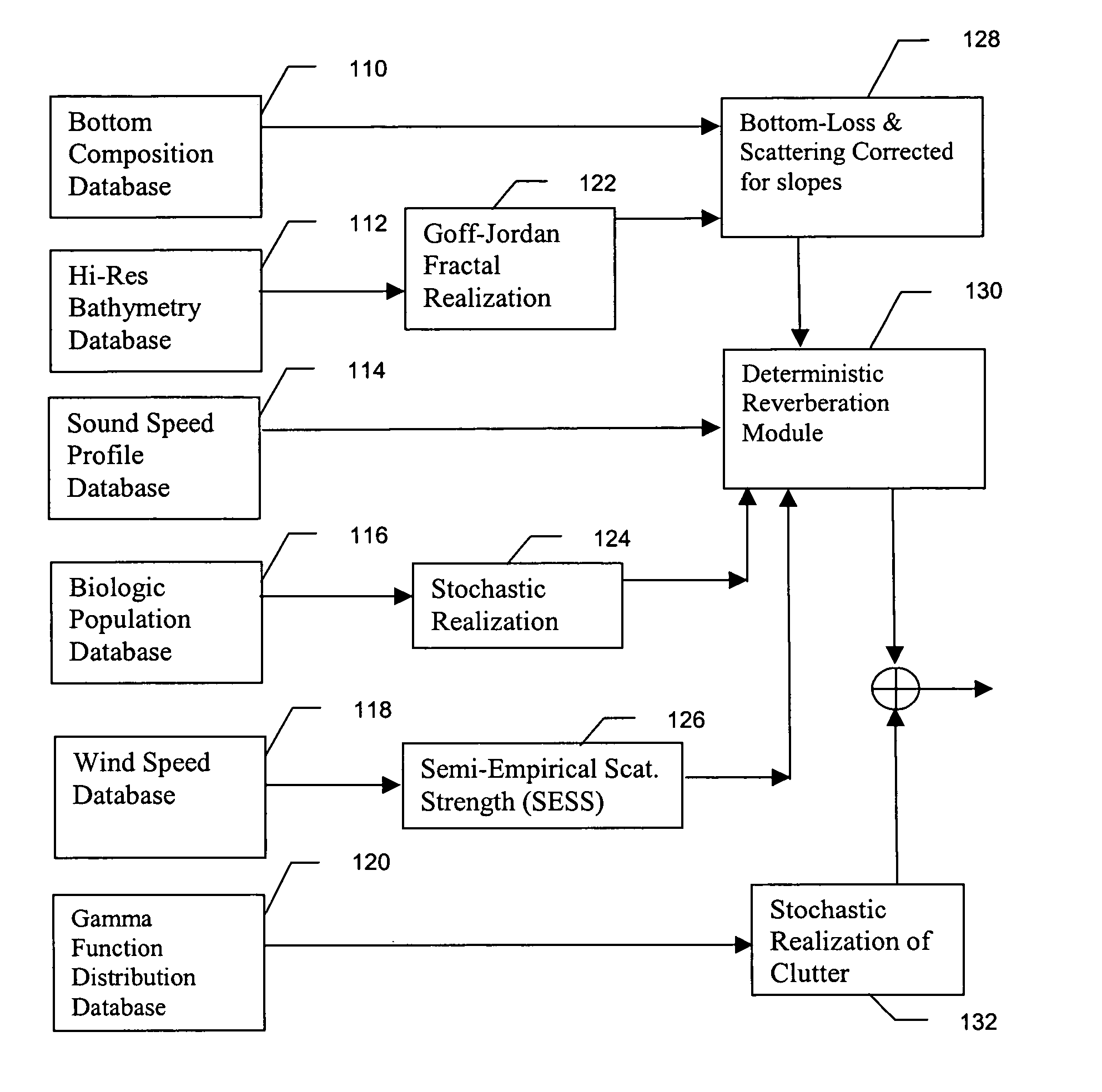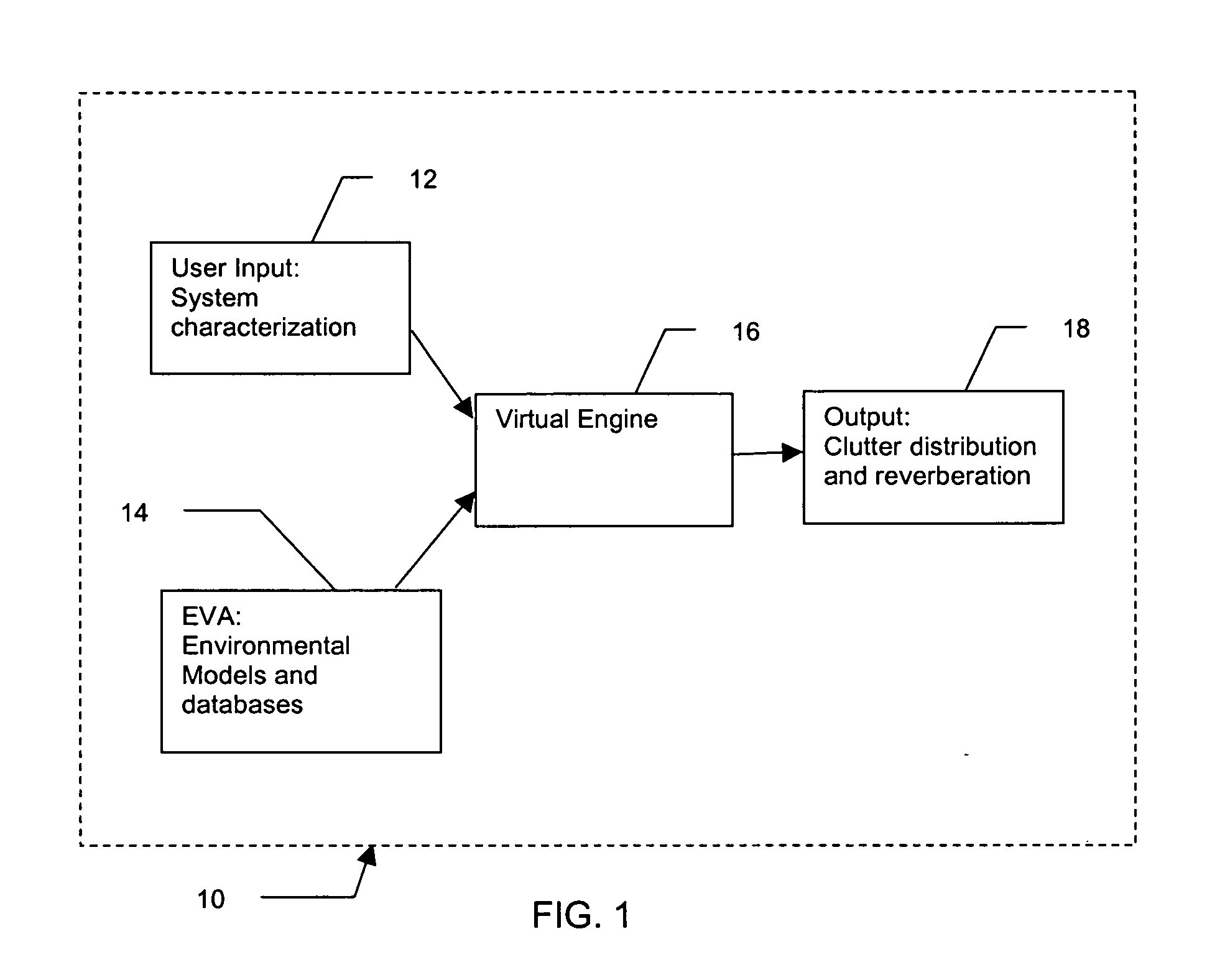Method and apparatus for active sonar performance prediction
a sonar and active technology, applied in the field of methods and equipment, can solve the problems of not providing a good simulation of the scattering off the ocean floor, unable to detect objects emitting sounds, and dominated by deterministic clutter
- Summary
- Abstract
- Description
- Claims
- Application Information
AI Technical Summary
Benefits of technology
Problems solved by technology
Method used
Image
Examples
Embodiment Construction
[0019] The present invention is a system and method for simulating the performance of sonar arrays and, in particular, for simulating the performance of low-frequency (<1 kHz), active sonar systems. In this acoustic frequency range, wave based models provide a more accurate simulation, particularly of the clutter and reverberation.
[0020] In a preferred embodiment of the invention, it is implemented as a software package running on a computer. A user interacts with this software package which allows them to characterize the sonar transmitter and receiver, the operational environment and the targets being sought. This may include, but is not limited to, the necessary bathymetry, sound-speed profiles, bottom composition and wind-speed.
[0021] In a preferred embodiment, the software system of this invention processes this data using a normal modes approach, which is a well-known method of calculating the propagation of acoustic waves. The normal modes are solutions to the wave equation...
PUM
 Login to View More
Login to View More Abstract
Description
Claims
Application Information
 Login to View More
Login to View More - R&D
- Intellectual Property
- Life Sciences
- Materials
- Tech Scout
- Unparalleled Data Quality
- Higher Quality Content
- 60% Fewer Hallucinations
Browse by: Latest US Patents, China's latest patents, Technical Efficacy Thesaurus, Application Domain, Technology Topic, Popular Technical Reports.
© 2025 PatSnap. All rights reserved.Legal|Privacy policy|Modern Slavery Act Transparency Statement|Sitemap|About US| Contact US: help@patsnap.com



